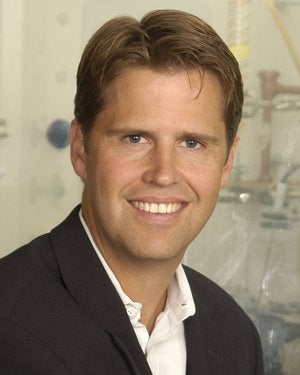Nanoparticle-based drug and nucleic acid therapies hold promise to improve treatments for a variety of brain disorders, including brain tumors and neurodegenerative diseases. However, it is difficult to achieve widespread drug and gene delivery in the brain due to the blood brain barrier and the nanoporous and highly adhesive extracellular matrix that minimizes distribution of nanoparticles once they reach the brain parenchyma. We found that sub-114 nm nanoparticles can penetrate healthy brain tissue and brain tumor tissue, but only if they possessed an extremely high surface coverage of hydrophilic and neutrally charged polyethylene glycol (PEG). We used this knowledge to create drug and nucleic acid loaded nanoparticle formulations that more effectively spread within the brain parenchyma following local infusion (“brain penetrating nanoparticles” or “BPN”). We showed that BPN loaded with chemotherapy were more effective in treating rats with brain tumors than similar nanoparticles that do not penetrate as efficiently. Also, unlike DNA nanoparticles with standard PEG coatings, DNA nanoparticles with dense PEG coatings were highly stable in cerebrospinal fluid and rapidly diffused in freshly excised healthy and tumor rodent brain tissues ex vivo. Consistent with ex vivo transport behavior, these “DNA BPN” rapidly spread within the brain following administration by convection enhanced delivery, leading to markedly improved distribution and overall level of transgene expression compared to DNA nanoparticles with standard PEG coating densities. With our collaborators, in particular Dr. Richard Price at the University of Virginia, we found that systemically-administered BPN can be delivered into desired regions of the brain using image-guided focused ultrasound with microbubbles that temporarily disrupt the BBB. We are working with Dr. Price and others to test these particles in the treatment of brain cancer, Parkinson’s Disease, and other disorders that affect the CNS.

Justin Hanes is the Lewis J. Ort Professor and Director of the Center for Nanomedicine at the Johns Hopkins University. He holds faculty appointments in the departments of Ophthalmology, Biomedical Engineering, Chemical & Biomolecular Engineering, Neurosurgery, Oncology, and Pharmacology & Molecular Sciences. He is a member of the National Academy of Medicine and the National Academy of Inventors. He is an inventor on more than 200 patents and patent applications on technologies that make drug and gene therapies safer and more effective. Multiple products based on these patents have been approved by the US FDA. Dr. Hanes has co-founded 10 pharmaceutical / biotech companies, and they have numerous different drugs in ongoing or planned human clinical trials. He is also a Venture Partner with Catalio Capital and has served as the Chief Scientist of the Camden Partners Nexus Fund. Dr. Hanes is a fellow of the Controlled Release Society (CRS), American Association of Pharmaceutical Scientists (AAPS), the American Institute of Medical and Biological Engineering (AIMBE), and the International Academy of Medical and Biological Engineering (IAMBE). He has been named among “The World’s Top 100 Young Innovators and Leaders in Technology and Business” by the MIT Technology Review, “The World’s Most Influential Scientific Minds” by Thompson Reuters / Clarivate (five times), Medicine Maker’s Power List in the Biopharmaceuticals category (2020 and 2021), and an Edward C. Nagy Investigator by the National Institute of Biomedical Imaging and Bioengineering of the NIH. He is a past President of the Controlled Release Society. His degrees are in Chemical Engineering from UCLA (B.S. 1991) and MIT (Ph.D. 1996), and he completed a postdoctoral fellowship in Oncology and Neurosurgery at Johns Hopkins prior to joining the faculty of the Johns Hopkins University in 1998.

